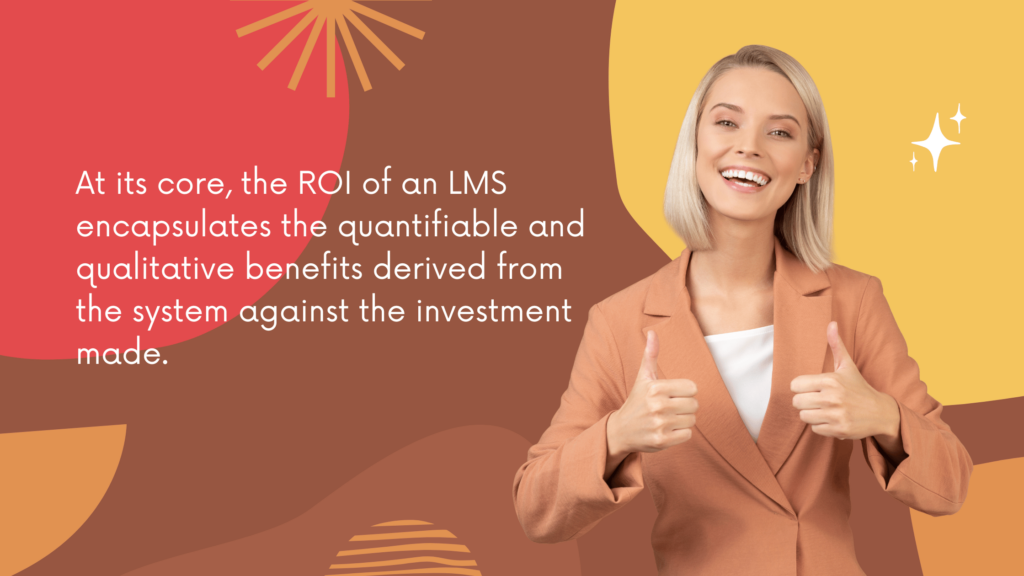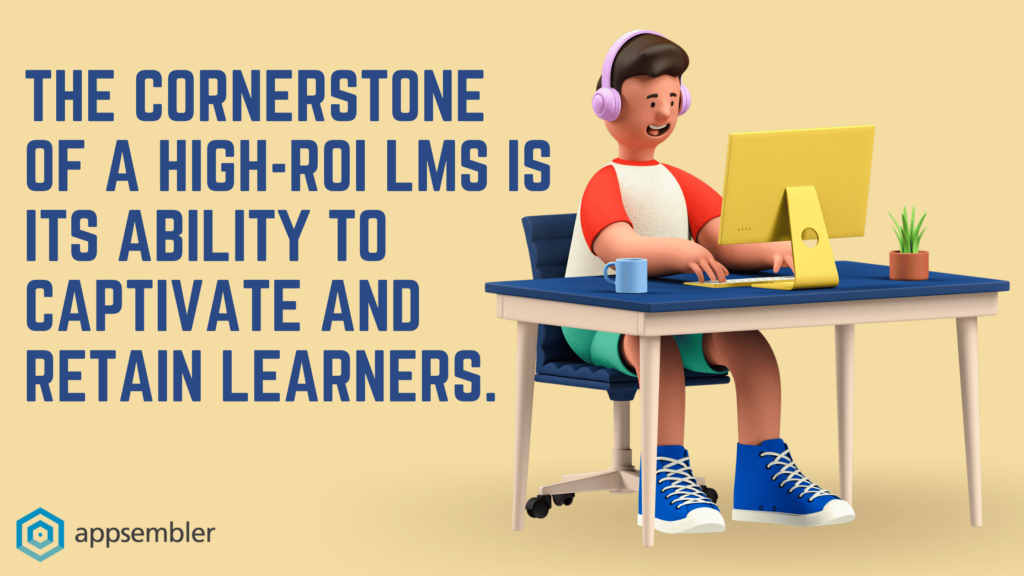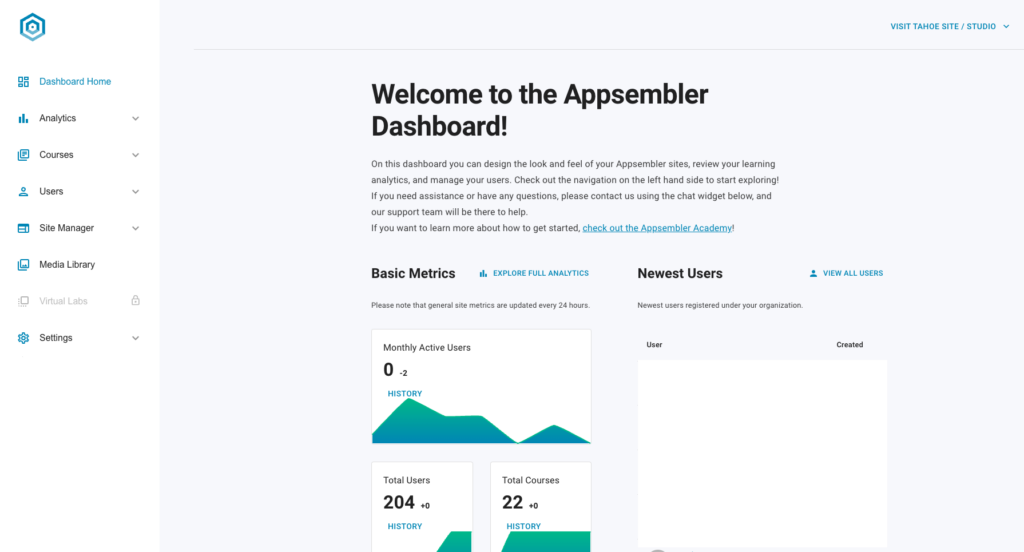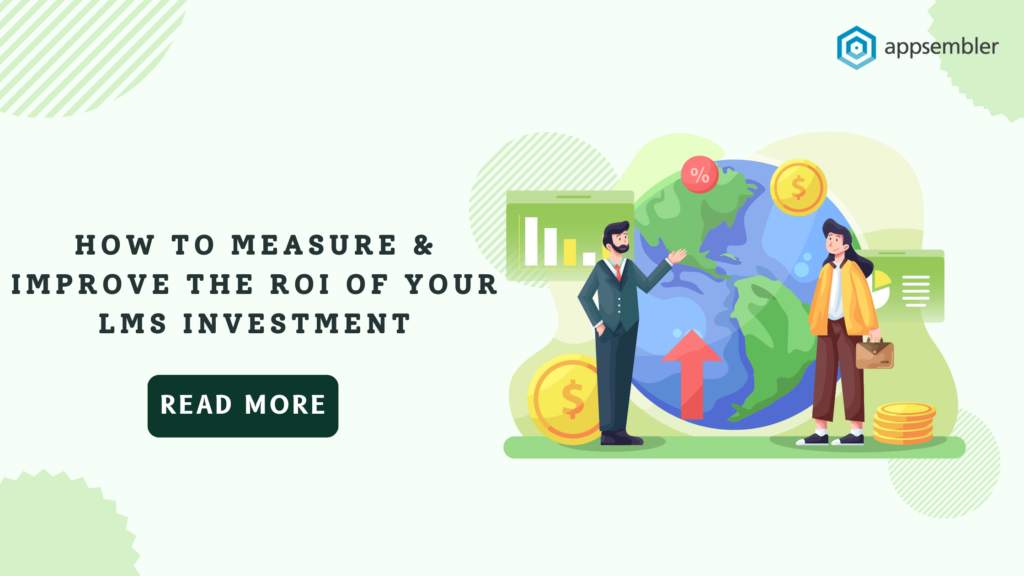In today’s rapidly evolving educational landscape, maximizing the Return on Investment (ROI) of Learning Management Systems (LMS) is crucial for educational institutions and businesses alike. This article delves into effective strategies and metrics for assessing and enhancing the value derived from your LMS, focusing on Open edX as a prime example. From user engagement to leveraging advanced analytics, we uncover the keys to turning your LMS into a high-ROI engine.
Key Takeaways:
- Understanding the holistic components of LMS ROI, including both direct and indirect costs.
- Identifying key metrics such as user engagement and learning outcomes for measuring LMS success.
- Strategies for personalizing learning paths and integrating LMS with other systems to improve efficiency.
- The critical role of analytics in making data-driven decisions to enhance LMS ROI.
- Continuous improvement and monitoring are essential for sustaining and increasing LMS ROI over time.
Table of contents
Introduction
In today’s digitally-driven educational landscape, the adoption of Learning Management Systems (LMS) has transitioned from a luxury to a fundamental necessity. These sophisticated platforms not only streamline the delivery of educational content but also foster an interactive learning environment that caters to diverse learning styles. However, as with any significant investment, the deployment of an LMS comes with its share of financial commitments, making it imperative for institutions and organizations to scrutinize the return on investment (ROI) of their LMS initiatives.
The essence of measuring and enhancing the ROI of an LMS investment lies not just in justifying the cost but in maximizing the value derived from its use. An LMS is more than a mere repository of content and quizzes; it’s a comprehensive ecosystem that supports the delivery, management, and tracking of learning processes. The ability to measure its impact directly influences strategic decisions, guiding organizations in optimizing their training programs and resources for better outcomes.
Understanding the ROI of an LMS extends beyond the initial financial outlay. It encompasses evaluating the efficiency gains, the qualitative improvement in learning experiences, and the alignment of educational objectives with organizational goals. The necessity to measure and improve the ROI stems from the need to ensure that the LMS not only supports the immediate learning needs but also contributes to the long-term success of the organization.
Improving the ROI of your LMS investment requires a multi-faceted approach, focusing on user engagement, content relevancy, integration capabilities, and the leverage of analytics for informed decision-making. With the right strategies, organizations can transform their LMS from a static platform into a dynamic learning tool that drives educational excellence, operational efficiency, and ultimately, financial success.
In the subsequent sections, we will delve deeper into the metrics that matter, strategies for enhancement, and the pivotal role of platforms like Appsembler in realizing the full potential of your LMS investment. Whether you’re a seasoned educator or a corporate training manager, understanding how to measure and boost your LMS ROI is crucial in navigating the complexities of today’s learning environments.
Understanding ROI in LMS
In the realm of Learning Management Systems (LMS), understanding the Return on Investment (ROI) is akin to navigating the intricate dance of cost versus value, where every dollar spent is an investment in the future of education and training. The ROI of an LMS is not merely a reflection of financial expenditure but a multifaceted indicator of its efficacy, efficiency, and alignment with organizational goals. With platforms like Open edX leading the charge in providing open-source, customizable learning solutions, the importance of dissecting ROI becomes paramount for institutions aiming to leverage technology for educational excellence.
Defining ROI in LMS

At its core, the ROI of an LMS encapsulates the quantifiable and qualitative benefits derived from the system against the investment made. In the context of LMS, this means evaluating not just the immediate impacts on learning outcomes and operational efficiency but also the long-term strategic advantages such as scalability, flexibility, and innovation in delivery methods. It’s about measuring the tangible outcomes—like cost savings and productivity gains—against the intangible, like enhanced learning experiences and improved organizational knowledge.
Components of LMS ROI
To unravel the ROI of an LMS, it’s essential to dissect its components into direct costs, indirect costs, and the overarching benefits.
- Direct Costs: These are the upfront and recurring expenses associated with the deployment and maintenance of an LMS. For platforms like Open edX, direct costs include the software itself (if opting for paid features or hosting services), hardware investments to support the infrastructure, and the creation or acquisition of training materials. These costs are relatively straightforward to quantify and form the baseline of ROI calculations.
- Indirect Costs: Often overlooked, indirect costs play a crucial role in the ROI equation. They encompass the time investment from both educators and learners, the resources dedicated to training and support, and the potential downtime during system implementation or upgrades. Although more challenging to measure, these costs are pivotal in understanding the total investment in an LMS.
- Benefits: The true value of an LMS investment is realized through its benefits, which include but are not limited to, improved operational efficiency, adherence to compliance requirements, and enhanced user satisfaction. These benefits manifest through reduced training times, better retention rates, streamlined administrative processes, and a more engaged learning community. Additionally, the flexibility and scalability provided by systems like Open edX allow organizations to adapt and grow without the constant need for reinvestment.
Understanding the ROI of your LMS investment requires a balanced assessment of these components, ensuring that every aspect of cost is weighed against the tangible and intangible benefits. It’s a comprehensive approach that not only justifies the financial outlay but also illuminates the path to achieving educational innovation and operational excellence.
Key Metrics to Measure LMS ROI
In the strategic evaluation of a Learning Management System (LMS) investment, particularly with sophisticated platforms like Open edX, it becomes imperative to identify and monitor key performance indicators (KPIs) that directly influence the Return on Investment (ROI). These metrics serve as the navigational stars, guiding educators and administrators through the vast sea of data to pinpoint the true impact of their LMS. By focusing on user engagement, learning outcomes, operational efficiency, and financial metrics, institutions can not only measure but also significantly improve their LMS ROI.
User Engagement Metrics
Engagement stands at the forefront of a successful LMS. Metrics such as login frequency and course completion rates offer a window into the level of interaction and commitment learners have with the platform. High login frequency suggests that users find the content accessible and compelling, while strong course completion rates indicate that the material is engaging and valuable. For platforms like Open edX, which pride themselves on flexibility and user-centric design, monitoring these metrics can highlight areas for enhancement in course design and content delivery.
Learning Outcomes
The heart of any LMS is the facilitation of effective learning. Assessment scores and skill acquisition rates are tangible indicators of the system’s impact on learning outcomes. These metrics not only reflect the quality of the educational content but also the efficacy of the delivery methods employed by the LMS. An upward trajectory in these areas signifies that learners are not just consuming content but are genuinely assimilating and applying the knowledge gained.
Operational Efficiency
An often overlooked yet critical aspect of LMS ROI is operational efficiency. Time savings for educators and administrators, along with a reduction in support tickets, are indicative of a streamlined and intuitive platform. Efficient operational metrics mean that more resources can be allocated to enhancing the learning experience, rather than troubleshooting technical issues. This efficiency translates into cost savings and a more productive use of time, both of which bolster the ROI of an LMS.
Financial Metrics
Lastly, financial metrics like cost-per-learner and profit margin improvements offer a direct measure of the LMS’s financial return. A decrease in cost-per-learner, for instance, suggests that the LMS is scaling effectively, providing education to more users without a proportional increase in costs. Similarly, improvements in profit margins for commercial training providers reflect the LMS’s ability to deliver high-quality education at a lower cost base.
By meticulously tracking these metrics, institutions can transform raw data into actionable insights, optimizing their LMS investment for better engagement, learning outcomes, efficiency, and financial performance.
Strategies to Improve LMS ROI
In the quest to maximize the Return on Investment (ROI) of a Learning Management System (LMS), such as Open edX, it’s crucial to employ strategic maneuvers that not only amplify its value but also ensure its sustainability and relevance. The landscape of digital learning is dynamic, requiring continuous refinement and adaptation. Below, we delve into strategies that promise to elevate the ROI of your LMS by focusing on user engagement, personalization, integration, and analytics-driven decisions.
Enhancing User Engagement and Experience

The cornerstone of a high-ROI LMS is its ability to captivate and retain learners. Engagement is not a byproduct of chance but the result of deliberate design choices that make learning not just accessible but also compelling. This involves the creation of interactive content, gamification elements, and community features that encourage collaboration and discussion. Open edX, known for its flexibility, allows for the incorporation of rich multimedia resources, discussion forums, and interactive exercises that transform passive learning into an active exploration. By prioritizing user experience, educators can foster a learning environment where engagement is the rule, not the exception.
Personalizing Learning Paths
In a one-size-fits-all approach, the unique needs and goals of individual learners are often overlooked, potentially hampering the LMS’s ROI. Tailoring learning paths to match the strengths, weaknesses, interests, and career aspirations of each learner can dramatically improve outcomes. Adaptive learning technologies, which are readily supported by platforms like Open edX, enable the creation of personalized learning experiences. This personalization not only enhances learner satisfaction and retention rates but also accelerates the pace of learning, contributing positively to the ROI.
Integrating with Other Tools and Systems
No LMS operates in isolation. The integration of your LMS with other tools and systems—such as CRM, HRIS, and content libraries—creates a seamless workflow that enhances efficiency and reduces friction. Open edX’s extensive API capabilities allow for such integrations, enabling data to flow freely between systems. This interconnectedness ensures that learning initiatives are aligned with broader organizational goals and metrics, thereby improving the LMS’s impact on operational efficiency and ROI.
Leveraging Analytics for Data-Driven Decisions
In the age of big data, the ability to make informed decisions based on analytics is a game-changer. An LMS like Open edX provides a wealth of data on learner engagement, performance, and outcomes. By analyzing this data, educators and administrators can identify trends, pinpoint areas for improvement, and tailor strategies to meet the evolving needs of their learners. This data-driven approach not only enhances the precision of interventions but also ensures that investments in the LMS are directed towards initiatives that offer the highest returns.
Implementing these strategies requires a commitment to continuous improvement and innovation. By enhancing user engagement, personalizing learning paths, integrating with other systems, and leveraging analytics, organizations can ensure that their LMS investment not only meets but exceeds expectations, delivering unparalleled value and impact.
Leveraging Appsembler to Enhance LMS ROI
In the intricate ecosystem of Learning Management Systems (LMS), Appsembler stands out as a beacon for organizations striving to measure and amplify the Return on Investment (ROI) of their educational initiatives. Specifically, when integrated with Open edX, Appsembler transcends traditional boundaries, offering a suite of features designed to not only track but also enhance the efficiency and impact of digital learning environments.

Appsembler’s Feature Set: A Catalyst for ROI Optimization
At the heart of Appsembler’s allure is its ability to bridge the gap between complex data and actionable insights. The platform offers robust analytics and reporting tools that illuminate the performance and engagement levels within an LMS like Open edX. These features enable educators and administrators to delve deep into metrics such as course completion rates, learner engagement patterns, and assessment outcomes, providing a clear picture of where the LMS excels and where there’s room for improvement.
Case Studies: Real-World ROI Enhancement
Consider the case of a mid-sized tech company that leveraged Appsembler to tailor its training programs on Open edX. By utilizing Appsembler’s detailed analytics, the company identified underperforming courses, which led to a targeted revamp of their content and structure. The outcome was a remarkable increase in course completion rates, from 65% to an impressive 85%, directly enhancing the company’s training ROI by improving employee skills and productivity.
Another example involves a higher education institution that used Appsembler’s reporting capabilities to track learner progress and engagement across its Open edX platform. The insights gained allowed for the personalization of learning paths, significantly reducing dropout rates and increasing the value derived from their LMS investment.
Simplifying Data Analysis for Strategic Decision-Making
Appsembler simplifies the complex world of data analysis by presenting insights in an accessible and actionable format. This simplification empowers decision-makers to swiftly identify trends, make informed adjustments, and allocate resources more effectively. The platform’s intuitive dashboards and real-time data visualization tools ensure that strategic decisions are based on solid, data-driven foundations, leading to sustained improvements in LMS ROI.
In leveraging Appsembler, organizations find not just a tool, but a strategic partner in their quest to maximize the ROI of their LMS investments. Through its comprehensive analytics, personalized learning pathways, and seamless integration with Open edX, Appsembler redefines the potential of digital learning, ensuring that investments translate into tangible, impactful returns.
Implementing Changes & Monitoring Impact
Navigating the path to maximize the Return on Investment (ROI) of a Learning Management System (LMS) like Open edX is a dynamic journey, replete with strategic implementations and vigilant oversight. Enhancing ROI is not a one-off endeavor but a continuous cycle of improvement, measurement, and refinement. Below are the steps and methodologies pivotal in implementing changes and monitoring their impact to ensure your LMS investment yields optimal returns.
Step 1: Strategic Implementation of Enhancements
Identify Areas for Improvement: Leverage data-driven insights from tools like Appsembler to pinpoint specific areas within your LMS that require enhancement. This could involve user engagement, course content, or the integration of additional functionalities.
Plan and Execute Enhancements: Once areas for improvement are identified, develop a strategic plan for implementing changes. This may include redesigning courses for better engagement, personalizing learning paths based on learner data, or enhancing the LMS interface for improved usability. Ensure that each enhancement is aligned with the overarching goal of maximizing ROI.
Leverage Community Feedback: Incorporate feedback from learners and educators into the enhancement process. Their firsthand experience can provide invaluable insights into what works and what doesn’t, further informing your strategy.
Step 2: Monitoring and Analyzing the Impact
Utilize Analytics: With the changes in place, use your LMS’s analytics tools to monitor the impact. Key metrics to watch include engagement rates, completion rates, assessment scores, and user feedback. Platforms like Open edX, supplemented by Appsembler’s analytics capabilities, offer comprehensive data that can be used to gauge the effectiveness of the implemented changes.
Conduct Comparative Analysis: Compare the new data with baseline metrics from before the enhancements were made. This comparison will highlight the direct impact of your changes on the LMS’s ROI, providing a clear picture of success or areas needing further adjustment.
Step 3: Adjusting Strategies Based on Insights
Iterative Refinement: The journey to optimize your LMS’s ROI is iterative. Use the insights gained from monitoring the impact of your changes to make informed decisions about further enhancements or strategy pivots. This could mean tweaking existing changes, rolling out new features, or even scaling back initiatives that didn’t yield the expected ROI.
Continuous Learning and Adaptation: Stay informed about the latest trends and technologies in the LMS and e-learning fields. The landscape is constantly evolving, and staying ahead of the curve ensures that your LMS remains competitive and continues to deliver high ROI.
Implementing strategic enhancements, monitoring their impact, and adjusting based on data insights form the cornerstone of a robust approach to improving the ROI of your LMS investment. This cyclical process of continuous improvement ensures that your LMS not only meets but exceeds the educational and operational goals of your organization, thereby maximizing the value derived from your investment.
Conclusion
In the digital age, the strategic investment in a Learning Management System (LMS) like Open edX is a testament to the commitment towards advancing education and training. The journey of measuring and improving the ROI of your LMS investment underscores the essence of not just validating financial outlays but enhancing the educational experience and operational efficiency. This endeavor demands a meticulous approach to tracking performance, implementing strategic enhancements, and adapting to the evolving needs of learners and the organization. Embrace a philosophy of continuous improvement, leveraging data-driven insights and innovative strategies to ensure your LMS investment not only meets but surpasses expectations. Let the quest for maximizing ROI inspire a culture of perpetual growth and learning, paving the way for a future where technology and education converge to create unparalleled value.
Calculating the ROI of your LMS involves a comprehensive approach, starting with the identification of both direct and indirect costs associated with the platform. Direct costs include the initial purchase or subscription fees, while indirect costs encompass training and support. Equally important is the assessment of benefits, such as improved learning outcomes and operational efficiencies. Best practices include setting clear objectives before implementation, regularly monitoring key performance indicators (KPIs), and conducting a cost-benefit analysis to quantify both tangible and intangible returns.
Tracking the success of an LMS implementation requires a focus on specific metrics that align with your organizational goals. Key metrics include user engagement rates, course completion rates, assessment scores, and feedback from learners and instructors. Utilizing the analytics and reporting tools provided by your LMS, such as Open edX, can offer valuable insights into user behavior and learning outcomes, facilitating informed decisions to enhance the platform’s effectiveness.
Crucial metrics for assessing LMS performance encompass user engagement, learning outcomes, and operational efficiency. Specifically, look at login frequencies, course completion rates, assessment results, and the rate of progress through learning paths. Additionally, measure operational aspects like time savings and the reduction in support tickets to gauge the system’s impact on administrative processes.
Yes, integrating your LMS with other systems can significantly affect ROI. Such integrations can streamline workflows, enhance data accuracy, and improve user experiences, leading to increased productivity and reduced administrative overhead. Integrating with HR systems, for example, can automate the tracking of employee training progress, directly impacting the LMS’s value proposition.
User feedback is a critical component in understanding the impact of your LMS and its ROI. It provides direct insights into user satisfaction, areas for improvement, and the effectiveness of learning materials. Implementing changes based on user feedback can enhance engagement, improve learning outcomes, and ultimately, contribute to a more favorable ROI by ensuring that the LMS meets the needs and expectations of its users.
Data analytics plays a pivotal role in optimizing LMS investments by offering evidence-based insights into user behavior, learning efficiency, and system performance. Through detailed analytics, organizations can identify trends, assess the effectiveness of content and strategies, and make informed decisions to adjust their approach, enhancing the ROI of their LMS investment.
Reviewing your LMS strategy should be an ongoing process, with formal evaluations conducted at least annually or bi-annually. Regular reviews allow you to adapt to changing learning needs, technological advancements, and organizational goals, ensuring that your LMS continues to deliver optimal ROI.
Yes, there are tools designed to help automate the ROI calculation for an LMS. These tools can track and analyze key metrics such as engagement rates, learning outcomes, and operational efficiencies, simplifying the process of determining the financial and educational impact of your LMS. However, it’s essential to supplement automated tools with qualitative assessments to capture the full scope of your LMS’s value.
Personalization in LMS content can significantly boost ROI by catering to the unique learning styles, needs, and preferences of each user. This individualized approach can improve engagement, accelerate learning, and increase course completion rates, directly contributing to better learning outcomes and operational efficiency. Personalization ensures that learners receive relevant, impactful education, maximizing the value derived from the LMS.
Common pitfalls in measuring LMS ROI include focusing solely on financial metrics, neglecting indirect costs and benefits, and failing to align the measurement process with organizational goals. To avoid these, ensure a balanced approach that considers both quantitative and qualitative factors, account for all costs and benefits, and regularly review your measurement strategy to align with evolving objectives and learning technologies.



